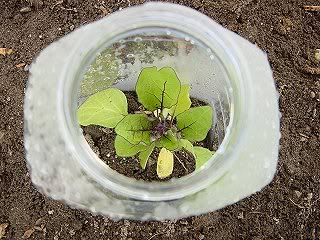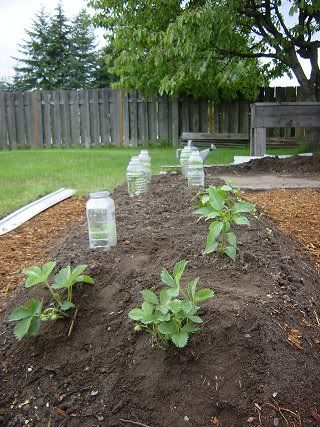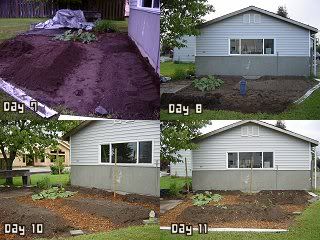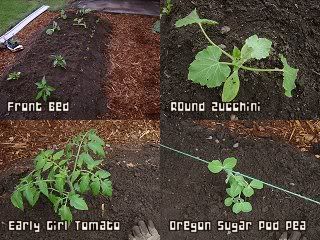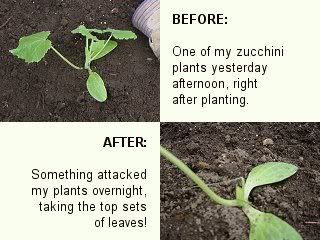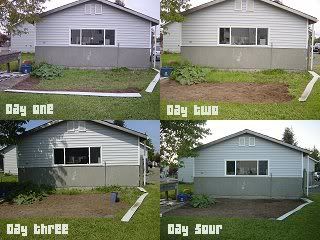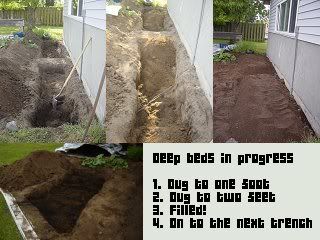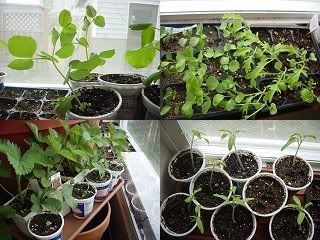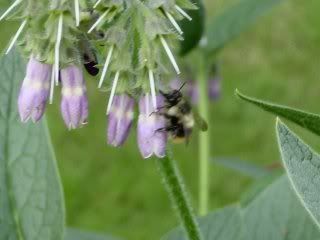 Some bees are dumber than others.
Some bees are dumber than others.I swiped part of the title of this post from the acclaimed
Sue Monk Kidd novel, but I'm referring to actual bees!
Specifically, I'm referring to the small bumblebees that are attracted to the comfrey in our side yard each year. They're predictable as clockwork-- as soon as the flowers start opening, there they are, up to ten at a time, gathering pollen as nice as you please. Today I went out to stake the plant before its inevitable fall (the weight of the stalks makes the whole plant collapse shortly after bloom), and my little garden guests kept buzzing me off, as if
I was the interloper.
I don't know why the bees go so crazy over the comfrey, but I'm in no place to criticize since it's one of my favorite plants, too. Medicinally, it can be used in compresses to speed healing (it contains a compound called allatoin, which is a cell proliferant). When added to the compost pile, comfrey foliage acts as an activator, helping to break down surrounding matter. Then, of course, there are the flowers-- so pretty and distinctive with curled racemes full of pink and purple blossoms. The fact that they bring extra pollinators to the garden is just a bonus.
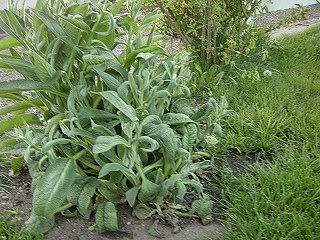 The comfrey four weeks ago (pre-bumblebee).
The comfrey four weeks ago (pre-bumblebee).Anyway, as I was saying, I went out to stake the comfrey, and the bees kept running me off. (To be fair, they didn't have to do much to freak me out, other than zip in my general direction). As I watched them, waiting for a break in the action, I realized that while most of the bees were flying from flower to flower, deftly landing on the downward-facing petals and working their heads inside, there was one bee in particular that just kept landing on the sides of the blossoms and inspecting the place where the sepals and petals met in confusion.
Clearly,
someone wasn't in line when they were handing out basic pollinator instincts.
Ten minutes later, as I was trying to capture this prospective winner of the insect Darwin Awards on film, my husband walked up and asked what I was doing. "Check it out," I told him, pointing, "it's a stupid bee."
DH watched for a while as I followed the bee around the comfrey. "Hey, I think he figured it out," DH said suddenly. "I just saw him going into a--"
"--it's not him, then," I said grimly. "I've been watching these bees for twenty minutes now and his MO hasn't changed once."
"But wait--" DH protested, hopeful of a happy ending. Then his voice fell again. "Oh, no, never mind. You're right. He's still stupid. I was looking at the wrong one."
Silence.
"What's up with this other guy?" DH asked, pointing at another bee that had been still inside one of the flowers for a good two minutes.
 "Zzzzzz." <--buzzing, or snoring?
"Zzzzzz." <--buzzing, or snoring?"Oh, him," I said, "I don't know. I thought he might have died in there at first, but then he moved on to another flower."
DH laughed. "So whoever made up the expression 'busy as a bee' wasn't talking about that guy."
"I guess not."
"Maybe he's narcoleptic," DH grinned.
And that is today's installment of silly garden conversations.
P.S. When I went out after sunset to have another go at staking the comfrey, all the other bees had gone home for the night-- except DH's narcoleptic bee, which was still hanging around with its butt sticking out of the same damn flower.
